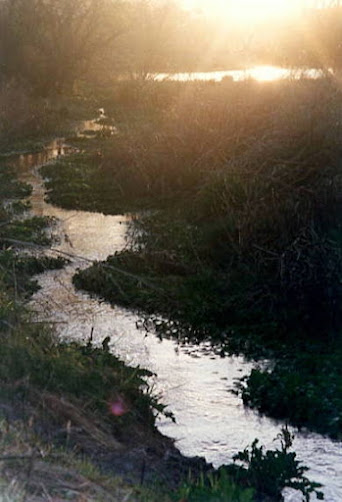The World of Woodpeckers, part 2
For instance, the favorite nesting place for Gila Woodpeckers is a living Saguaro cactus. And as you can imagine, drilling a nesting cavity is a little different when you do it in a cactus than in a tree. A Gila Woodpecker's bill is not strong enough to penetrate the ribs of a Saguaro, so it has to drill its nest cavity low on the Saguaro trunk, where the ribs are far enough apart to drill the entry hole between them. Northern Flickers however, have a strong enough bill to drill directly through the ribs, so their nest cavities are typically the highest on the Saguaro trunk. AND, no matter what woodpecker species is doing the nest-making, it actually takes a lot of advance planning. The inner pulp of the Saguaro is very juicy with stored water, so woodpeckers have to drill their nesting cavity long before nesting season, then wait for the Saguaro to "do its part" to complete the cavity. A Saguaro responds to the woodpecker drilling and excavating by secreting a resinous sap that hardens over time into a bark-like shell all around the perimeter of the cavity, which prevents the Saguaro from loosing precious fluids through the entry hole. That bark-like shell forms a kind of waterproofing that benefits the Saguaro and the nest cavity! The process takes time, and the nest cavity can't be used until its complete, which means that the woodpeckers have to patiently wait many months or even a full year before using the nest cavity. It's well worth the wait though, because the temperature in a Saguaro nest cavity can be 20-30 degrees cooler than the outside air during the summer months, and the many sharp spines protect the entrance, both of which enhance the survival chances for all woodpecker chicks born there.
When a
Saguaro dies, all of its soft, juicy parts decay, but its woody
ribs last much longer, as do all the bark-like shells inside its
trunk. Those exposed shells have a shape and color that looks a little
like a leather boot, so have been given the name "Saguaro boot." It's illegal to collect Saguaro boots from the wild, the same as it is for collecting Saguaro ribs. The photo to the right is of a Saguaro boot collected by Hack and Emma Mae Townsend during one of their trips to Mexico sometime between approx. 1935-1965, during the same years they also collected the hundreds of Saguaro ribs that they used for the fence around their Arivaca properties.
Gila Woodpeckers can raise 2-3 broods of chicks each year between April and August, if food is plentiful for the adults and chicks. Northern Flickers and Gilas will also use the same nest cavity for more than a year if it has not been taken over by another cavity-nesting birds, animals, or bees. However, these nest cavities are highly prized and frequently claimed by other bird species whose bill is not strong enough or shaped well to excavate their own nests, including American Kestrels, Elf Owls, Ferruginous Pygmy-Owls, Ash-throated Flycatchers, Brown-crested Flycatchers, Purple Martins, Cactus Wrens, and Lucy’s Warblers. These "secondary nesting" birds will adapt the interior of the nest cavity by bringing in grasses, twigs, etc. to make it fit their preferences for size, shape, and distance between the bottom of the nest and the entry hole.
 |
| Northern Flicker female |
Speaking of which, most woodpeckers typically excavate a nest cavity that is relatively long and narrow, and has a fairly large entry hole near the top. This shape allows the female to sit on the eggs and keep the chicks warm deep inside the cavity while holding her head with the bill tilted upwards. This make it easy for her to use that sharp bill to attack any predator that dares to reach its head or paw into the nest cavity. Yowza!!!
This Saguaro boot shows the long, narrow, nest cavity shape favored by most woodpeckers.
However, not all woodpecker nest cavities in a Saguaro end up this shape, because a single Saguaro can host many nest cavities. Holes and cavities excavated close together can end up joined into a single large chamber by the time the Saguaro secretes the resinous sap that walls them off from its growing tissues.
 |
| Gila Woodpecker in Saguaro |
 |
| Gila Woodpecker in Mesquite Tree |
 | |
| White-breasted Nuthatch at its nest |
Downy Woodpeckers, the smallest woodpecker in North America, drill an entry hole into trees that is only 1.5 inches in diameter, and excavate a small cavity inside, so the "secondary nesting" species who reuse their nests are Mountain Bluebirds,White-breasted Nuthatches, and Black-capped Chickadees. Nest cavities that are created in trees near a pond or lake are frequently reused by Tree Swallows.
In a way, the woodpeckers of the world are benevolent developers, working hard to build home after home that eventually provide free nesting places for dozens of other birds to raise their young in safety and security. Kind of like George Bailey in "It's a Wonderful Life". Hats off to this marvelous species!
For more information on the world of Gilas, Flickers, and other woodpecker species, visit
https://allaboutbirds.org
Photo credits:
Gila Woodpeckers and Saguaro nest: https://www.animalspot.net
Saguaro boots: Conrad Uno
Northern Flicker: CelebrateUrbanBirds.org
White-breasted Nuthatch: Wikipedia, Creative Commons Attribution 2.0 Generic license.







